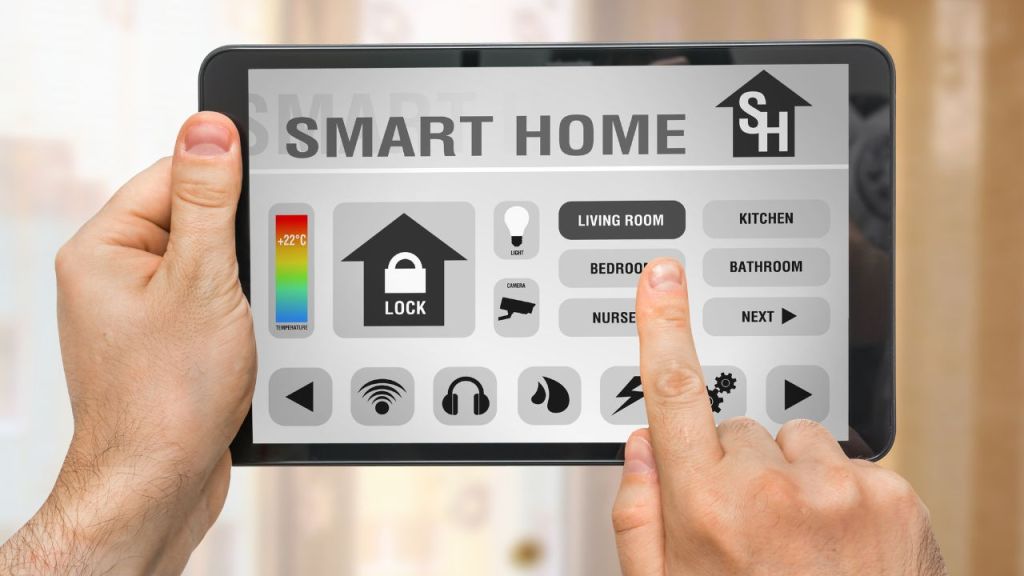As the world becomes more environmentally conscious, it’s no surprise that the use of bioplastics is on the rise. Bioplastics are an innovative solution to the plastic waste problem, as they’re made from renewable resources and can be biodegradable under the right conditions.
Plastic waste is one of the most significant environmental problems facing the planet. It doesn’t biodegrade and can persist in the environment for hundreds of years, causing harm to wildlife and ecosystems. The accumulation of plastic waste in the ocean is particularly alarming, with an estimated 8 million metric tons of plastic entering the ocean each year.
Today, we’ll discuss the incredible uses of bioplastics and how they’re revolutionizing sustainability.
Introduction to Bioplastics
Bioplastics come from renewable sources such as corn starch, sugarcane, and vegetable fats and oils, and are a sustainable alternative to traditional petroleum-based plastics. Bioplastics can be used to make various products, including food packaging, agricultural applications, medical devices, and automotive parts.
Understanding Bioplastics: Types and Properties
There are two main types of bioplastics: biodegradable and non-biodegradable. Biodegradable bioplastics break down naturally in the environment, while non-biodegradable bioplastics are made from renewable resources but don’t break down naturally.
Bioplastics have different properties depending on the material they’re made from. For example, bioplastics made from corn starch are transparent and have a low melting point, while those made from sugarcane are more durable and heat-resistant.
Benefits of Bioplastics Over Traditional Plastics
Bioplastics have several benefits over traditional petroleum-based plastics. They are made from renewable resources, which means they reduce our reliance on fossil fuels. They also produce fewer greenhouse gas emissions during production.
Bioplastics are also biodegradable, which means they break down naturally in the environment and don’t contribute to plastic waste. This feature is especially important in the food packaging industry, where traditional plastics harm the environment.
Bioplastics vs. Biodegradable Plastics: Understanding the Difference
It’s important to understand the difference between bioplastics and biodegradable plastics. Bioplastics are made from renewable resources and can be biodegradable or non-biodegradable. On the other hand, biodegradable plastics are made from traditional petroleum-based materials but break down in the environment.
While biodegradable plastics may seem like a good alternative to traditional plastics, they still contribute to plastic waste and can take years to break down. Bioplastics, on the other hand, are a more sustainable solution to the plastic waste problem.
6 Incredible Uses of Bioplastics
Using bioplastics for various products is a growing trend as more companies and individuals seek to reduce their reliance on non-renewable fossil fuels and decrease the amount of plastic waste that ends up in landfills and oceans.

Food Services
One of the most significant uses of bioplastics is in food packaging. Uses of bioplastics in the food industry have the potential to reduce the environmental impact of plastic waste and decrease our reliance on non-renewable fossil fuels. Some of the more common bioplastic food services products include:
- Food Packaging: Bioplastics make up various food packaging materials, including trays, containers, and wraps. These materials can be made from plant-based sources such as corn starch, sugarcane, or potato starch and can be biodegradable or compostable.
- Utensils: Bioplastics can be used to make disposable utensils such as forks, spoons, and knives. These utensils often come from polylactic acid (PLA), a biodegradable bioplastic derived from corn starch.
- Bags: Bioplastics can also be used to make plastic bags in the food industry, such as produce or shopping bags. Manufactureres make these bags from cassava, sugarcane, or potato starch.
- Food Containers: Bioplastics can be used to make food containers such as cups, bowls, and plates. Companies make these containers from materials such as bagasse (a fibrous byproduct of sugarcane), bamboo, or wheat straw.
- Bottles: Bioplastics can be used to make bottles for beverages and other liquids. Companies can source these bottles from materials such as PLA or biodegradable polyhydroxyalkanoates (PHAs) produced by certain types of bacteria.

Agricultural Applications
You’ll also find bioplastics across agricultural applications. Uses of bioplastics in agriculture help to reduce waste and pollution while promoting sustainability and environmental protection.
- Mulch Films: Biodegradable mulch films made from bioplastics are used in agriculture to suppress weeds and retain moisture in the soil. These films can be left on the ground after use and will degrade naturally, reducing waste and pollution.
- Seedling Trays: Biodegradable seedling trays made from bioplastics are used in agriculture to grow seedlings that are later transplanted to the field. These trays can be planted directly into the soil, reducing the need for manual transplanting and minimizing waste.
- Packaging: Bioplastics are also used in agricultural packaging for products such as fruits and vegetables. This reduces the use of traditional petroleum-based plastics and can help to reduce waste.
- Soil Stabilization: Bioplastics are used in agriculture to stabilize soil and prevent erosion. You’ll find them in various applications, including slope stabilization, erosion control, and sediment retention.
- Biodegradable Pots: Biodegradable pots made from bioplastics are used in agriculture to grow plants that will later transplant into the field. These pots can be planted directly into the soil, reducing the need for manual transplanting and minimizing waste.

Health and Medical Industry
The medical industry is quickly embracing bioplastic technology to make devices such as sutures, implants, and drug delivery systems. Bioplastics are biocompatible, which means they don’t cause an adverse reaction in the body. They also break down naturally in the body, reducing the need for additional surgeries to remove the device.
- Medical Devices: Bioplastics can help manufacture various medical devices such as surgical instruments, implants, and drug delivery systems.
- Biodegradable Sutures: Bioplastics can make biodegradable sutures that the body can absorb over time. These sutures are often made from materials such as PLA or polyglycolic acid (PGA) and can reduce the risk of complications associated with non-absorbable sutures.
- Packaging for Medical Products: Bioplastics are used to make packaging materials for medical products, such as sterile equipment and medication. These materials can be made from biodegradable polymers, such as polycaprolactone (PCL), which can be broken down in the environment or through composting.
- Wound Dressings: Bioplastics can be used to make biodegradable wound dressings. Materials such as PHAs or collagen can even promote healing and reduce the risk of infection.
- 3D Printing: Bioplastics are rapidly improving the 3D printing of medical implants and prosthetics. These bioplastics come from materials such as PLA, PHAs, or PCL, which can be customized to meet specific patient needs.

Automotive and Aerospace Manufacturing
Bioplastics also impact the automotive and aerospace fields, helping to manufacture parts such as door panels and lightweight parts for satellites or drones. Bioplastics are lightweight and durable, making them an attractive alternative to traditional petroleum-based plastics.
- Automotive Interiors: Bioplastics can be used to make automotive interiors, such as dashboards, door panels, and seat cushions.
- Exterior Parts: Bioplastics are also ideal for use on the exterior parts of vehicles, such as body panels and bumpers.
- Aerospace Components: Bioplastics make components for aerospace applications, such as lightweight parts for satellites or drones.
- Insulation: Bioplastic insulation is becoming more prevalent in the automotive and aerospace industries. Bio-based materials, such as cork or hemp fibers, provide excellent insulating properties.
- Lubricants: Bioplastics can also be used as lubricants in the automotive and aerospace industry. These materials can be made from plant-based sources, such as soybean oil, and can be fully biodegradable.

Textile Applications
Bioplastics in the textile industry offer a great and eco-friendly way to make fabrics and clothing. Manufactureres can also develop industrial textiles from bioplastics.
- Clothing: Bioplastics can make clothing items such as t-shirts, jackets, and even dresses. Bioplastic fibers are spun into yarn and then woven or knitted into fabric. This clothing is both eco-friendly and comfortable to wear.
- Accessories: Bioplastics can make bags, hats, and belts. These accessories are durable, lightweight, and environmentally friendly.
- Upholstery: Bioplastics can make upholstery for furniture such as chairs and sofas. This upholstery offers an eco-friendly option for consumers who want to reduce their carbon footprint.
- Non-woven Fabrics: Bioplastics can make non-woven fabrics such as disposable wipes, sanitary napkins, and diapers. These products are biodegradable and environmentally friendly.
- Carpeting: Bioplastics can make carpeting for homes and businesses. Bioplastic carpeting is durable, long-lasting, and eco-friendly.
- Industrial Textiles: Bioplastics can produce industrial textiles such as filters, geotextiles, and ropes. These products are strong, durable, and can withstand harsh environments.

Building Materials
Bioplastics can also be used in the construction industry to make building materials such as insulation and roofing tiles. Bioplastics are lightweight and durable, which makes them an attractive alternative to traditional materials like fiberglass and asphalt.
- Insulation: Bioplastics can be used to create building insulation materials, such as rigid foam insulation. Bioplastics can help to improve the energy efficiency of buildings by reducing the amount of heat that is lost through the walls and roofs.
- Roofing: Bioplastics can be used to create roofing materials such as shingles and tiles. These materials can be made from biodegradable polymers that are resistant to weathering, making them a sustainable alternative to traditional roofing materials.
- Flooring: Bioplastics can be used to create flooring materials such as tiles, mats, and carpets. These materials can be made from biodegradable polymers that are durable, lightweight, and easy to maintain.
- Wall Panels: Bioplastics can be used to create wall panels for interior and exterior walls. Bioplastic wall panels can be made from a variety of biodegradable polymers, such as starch-based materials, and can be designed to be fire-resistant and waterproof.
- Windows: Bioplastics can be used to create window frames and components. Bioplastic window frames can be made from renewable sources such as corn starch and sugarcane, making them a sustainable alternative to traditional plastic frames.
- Concrete Additives: Bioplastics can be used as additives in concrete to improve its properties such as strength, durability, and water resistance. Biodegradable polymers can be added to concrete to create a more sustainable and eco-friendly construction material.
Innovative Bioplastic Products to Watch Out For
As technology advances, new and innovative bioplastic products are being developed. One such product is Shrilk–a biodegradable plastic made from shrimp shells. Shrilk is strong, lightweight, and biodegradable, making it an attractive alternative to traditional plastics.
Bioplastic Manufacturing and Production
Bioplastics can be manufactured using various methods, including fermentation and chemical synthesis. The production of bioplastics requires less energy and produces fewer greenhouse gas emissions than traditional plastics.
Bioplastic manufacturing and production involves several steps, which may vary depending on the type of bioplastic being produced:
- Step 1 – Sourcing Raw Materials: The first step in bioplastic manufacturing is sourcing the raw materials. Depending on the type of bioplastic being produced, the raw materials may come from crops such as corn, sugarcane, or cassava or from waste materials such as food scraps or agricultural byproducts.
- Step 2 – Extraction and Refining: Once the raw materials have been sourced, they need to be extracted and refined to produce the bioplastic. This process can involve various steps such as grinding, drying, and separating the desired components from the raw material.
- Step 3: Polymerization – Polymerization is the process of combining small molecules (monomers) to form a long chain (polymer). This step involves heating and mixing the refined materials to create the desired biopolymer.
- Step 4: Molding and Shaping – Once the biopolymer has been created, it can be molded and shaped into various forms such as sheets, films, fibers, or pellets. These forms can then be used in the production of various products.
- Step 5: Quality Control – Quality control is an essential step in bioplastic manufacturing to ensure that the final product meets the desired specifications. This can involve various tests such as mechanical testing, thermal testing, and environmental testing.
- Step 6: Distribution and Use – The final step in bioplastic manufacturing is the distribution and use of the products. Bioplastics can be used in a wide range of applications, including packaging, textiles, and medical devices.

Challenges and Future of Bioplastics
While bioplastics offer many benefits, there are still challenges to overcome. One challenge is the cost of production. Bioplastics are more expensive to produce than traditional plastics, making them less attractive to manufacturers.
Another challenge is the lack of infrastructure for bioplastics. There are currently limited facilities for composting bioplastics, which can make it difficult for consumers to dispose of these products properly.
However, despite these challenges, the future of bioplastics looks bright. As technology advances and more consumers become environmentally conscious, the demand for bioplastics will likely increase.
Promoting Sustainable Living With Bioplastics
Using bioplastics is just one way we can promote sustainable living. By choosing products made from renewable resources and biodegradable materials, we can reduce our impact on the environment and help create a more sustainable future.
Frequently Asked Questions
Here are some answers to the most commonly asked questions about the uses of bioplastics.
Are all bioplastics actually biodegradable?
Not all bioplastics are biodegradable. In fact, some bioplastics can be just as durable as traditional petroleum-based plastics and may not break down for hundreds of years.
Biodegradable bioplastics, on the other hand, will break down more quickly than traditional plastics. However, the biodegradation rate can vary depending on factors such as temperature, humidity, and the presence of microorganisms.
Are bioplastics actually sustainable?
Whether or not bioplastics are currently sustainable is complex and depends on various factors such as the type of bioplastic, the production process, and the end-of-life disposal options.
The production of bioplastics also requires large amounts of energy, water, and land resources, which can negatively contribute to deforestation, water scarcity, and greenhouse gas emissions.
Additionally, bioplastics that are not composted or biodegraded properly can end up in landfills, where they may not break down properly and release methane, a potent greenhouse gas.
How do bioplastics help the environment?
Bioplastics can help to reduce the environmental impact of plastic production and disposal. For instance, the production of bioplastics generates fewer greenhouse gas emissions than traditional plastics.
By using renewable resources, bioplastics reduce carbon emissions by using plants to capture carbon dioxide from the atmosphere during photosynthesis.
Additionally, some bioplastics can be composted at home, while others can be recycled or biodegraded in industrial composting facilities. This helps to reduce waste and prevent pollution.

Use Bioplastics To Help Reduce the Plastic Waste Problem
Bioplastics are an innovative solution to the plastic waste problem. They offer several benefits over traditional petroleum-based plastics, including being made from renewable resources and is biodegradable.
Bioplastics can be used to make various products, including food packaging, agricultural applications, medical devices, and automotive parts. As technology advances and more consumers become environmentally conscious, the demand for bioplastics will likely increase, and we can look forward to a more sustainable future.
Are You Ready To Join the Revolution?
Join the revolution for a sustainable future by choosing products made from renewable resources and biodegradable materials, such as bioplastics. Make a conscious effort to reduce your impact on the environment and promote sustainable living.






Leave a comment